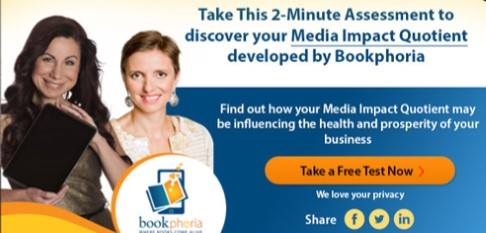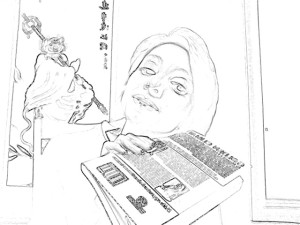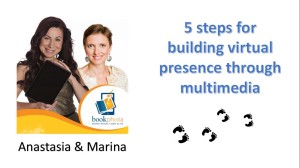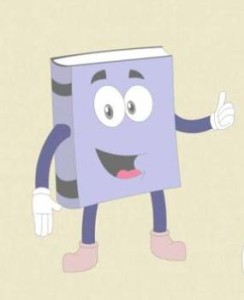The Brain Alchemist has been nominated for the Liebster Award: My answers to 10 questions.
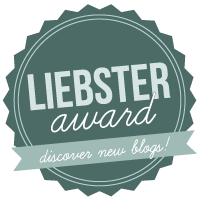 The Brain Alchemist has been nominated for the Liebster Award by Nancy J. Smyth of Virtual Connections. Nancy is Professor and Dean at the University at Buffalo School of Social Work. I had the pleasure of sharing some wonderful times and book club discussions with Nancy when we lived in Buffalo, NY. Now, I host my own book club in Stamford, CT, and I am so grateful to be able to keep in touch through the advances in social media. Nancy’s thought-provoking blog Virtual Connections explores the intersection of social work and the digital world. The Liebster Award carries forward the spirit of connection and discovery, and I am honored to take part in it.
The Brain Alchemist has been nominated for the Liebster Award by Nancy J. Smyth of Virtual Connections. Nancy is Professor and Dean at the University at Buffalo School of Social Work. I had the pleasure of sharing some wonderful times and book club discussions with Nancy when we lived in Buffalo, NY. Now, I host my own book club in Stamford, CT, and I am so grateful to be able to keep in touch through the advances in social media. Nancy’s thought-provoking blog Virtual Connections explores the intersection of social work and the digital world. The Liebster Award carries forward the spirit of connection and discovery, and I am honored to take part in it.
Here are the rules for the Liebster Award. To accept the award:
- Thank your Liebster Blog Award presenter on your blog and link back to the blogger who presented this award to you.
- Answer the 10 questions from the nominator.
- Nominate 10 blogs and create 10 questions for your nominees.
Now, it is my turn to answer the 10 questions from the nominator.
- What are you hoping to achieve with your blog?
The Brain Alchemist is my platform to explore how our brains influence the ways we communicate with the world and with our inner selves. I am driven by my curiosity and the desire to help people express themselves fully – without fear and with power and passion. Public speaking, just like blogging, is all about connection with people and ideas.
- Where do you get your ideas for blogging?
I often find inspiration for blogging in the current neuroscience research. I am a nerd at heart, ideas stimulate my imagination. People and their stories are another source of inspiration for me.
- What’s the hardest part of blogging for you?
My best writing usually happens when I am trying to fall asleep or when I wake up in the middle of the night. Thoughts just start flowing through my mind. In fact, scientists discovered that we are often more creative when we are tired. When our brains are less focused, we can tap into a wider range of information and make connections between ideas that may not be available to a narrowly focused mind. My blogging keeps me awake too often for too long!
- Which of your blog posts is your favorite, and why?
It is hard to choose one favorite post because they all reflect the evolution of my own thinking, experiences, and preferences. If I have to choose one, it would be Sensation and Perception: 12 examples of how physical experiences influence attitude and judgment. It is a reminder of how context shapes our thoughts and perceptions. We interact with the world around us in surprising ways. Things can subconsciously seep into our minds and tweak our reactions and behavior. Our physical environment can be a silent decision-maker. Just like a magician can manipulate the scene to make the audience shift its attention to something while a watch disappears from the wrist of an unsuspecting participant, speakers and presenters can use smells, colors, sounds, and textures to influence the moods and minds of the audience.
- What is one thing that you think people would surprised to know about you?
I am an introvert who may feel uncomfortable with small talk but loves public speaking. Most people prefer the opposite. I remember when I was in high school in Moscow, Russia, I participated in various declamation contests and even got a third place at the city of Moscow competition at one point. That’s how I started my journey into public speaking and later teaching and training. Now, I enjoy coaching others in public speaking, communication and conflict management skills, and rewiring brains to overcome the fear of public speaking.
- What are your favorite ways to unwind?
I like yoga, long walks, books, dancing and cooking.
- What are some books you are reading for fun right now?
I am reading “A Creator’s Guide to Transmedia Storytelling” by Andrea Phillips right now. I am fascinated by the developments in transmedia where you pair your content with specific platforms to tell your story across multiple media channels. Your audience can choose how to engage with the story. They can even become part of the story and influence its development.
“What Makes Your Brain Happy and Why You Should Do the Opposite” by David DiSalvo is my current read for The Mind and the Brain book club, which I host monthly.
I also love rereading Russian children’s books from my childhood with my eight-year-old daughter.
- What are some of your favorite quotations?
“Life can only be understood backwards; but it must be lived forwards.” ~ Søren Kierkegaard
“When nothing is sure, everything is possible.” ~ Margaret Drabble
“I feel there is nothing more truly artistic than to love people.” ~ Vincent Van Gogh
“Owning our story can be hard but not nearly as difficult as spending our lives running from it. Embracing our vulnerabilities is risky but not nearly as dangerous as giving up on love and belonging and joy—the experiences that make us the most vulnerable. Only when we are brave enough to explore the darkness will we discover the infinite power of our light.” ~ Brené Brown
“We don’t see things as they are, we see them as we are.” ~ Anaïs Nin
- What was a significant milestone for you in 2013?
My business partner, Dr. Marina Kostina of Wired@Heart, and I launched our Bookphoria project where we help authors, speakers and experts make their books and expert content thrive in multimedia. We are very excited about the response we are receiving to our multimedia solutions and online courses. People want to engage with information in new, dynamic, multisensory ways through virtual channels that they prefer and where they can find their community or “tribe.” Our brains are wired to be social, and our learning is social. We use games, scenarios, animation, digital art to make learning fun.
- What question do you wish I had asked you…and why?
“What makes you happy?” I like this question because simply thinking about things that make me happy puts me in a better mood. The list is long: playing with my daughter, spending time with my family and friends (even if it is through Skype, we are all global), travelling, feeling inspired by my work and my clients, taking pictures of flowers and food, swimming in the ocean, sunsets, books, stimulating conversations, good food, coffee, tea and wine, jewelry that tells a story, essential oils … there are so many things to appreciate in life!
The blogs I nominate for the Liebster Award:
- The CINERGY® Conflict Management Coaching Blog – ConflictMastery™ Quest(ions)
- The Texas Conflict Coach
- Wired@Heart
- The Hecklist
- Human Services Consulting and Training
- Collaborative Journeys
- Enjoy Mediation
- The ROART Group
- Conflict Zen Blog
- Jason Dykstra
My ten questions for the nominees:
- What inspired you to start blogging?
- What do you hope to achieve with your blog?
- What are three attributes that best describe your blog?
- How do you nurture your creative side?
- What are you reading right now?
- What are your preferred ways of getting the information you need?
- What do you like to do to unwind?
- What is your most ambitious goal or aspiration for 2014?
- What makes you happy?
- Anything else you would like to share?

